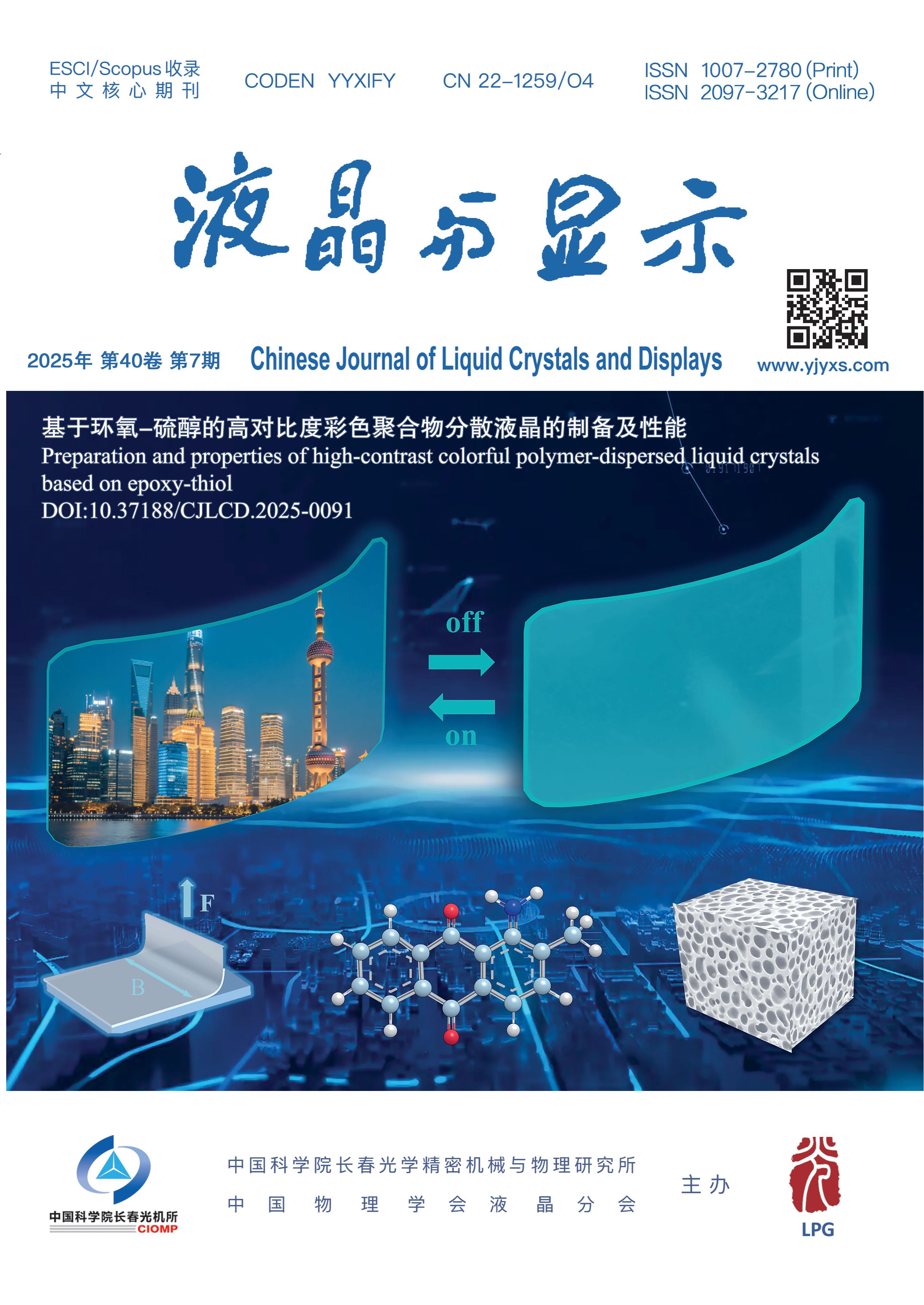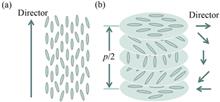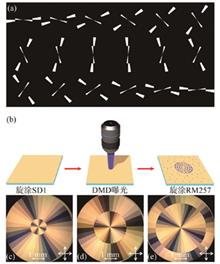
Cholesteric liquid crystal elastomer (CLCE) is a new kind of soft smart material. It combines the unique optical properties of cholesteric liquid crystal (CLC) with the excellent mechanical properties of elastomer. Compared with ordinary CLC, CLCE adds reversible and delay-free mechanical regulation ability, which raises the utilization of stimulus responsiveness of CLC to a new height, and has attracted more and more attention in the fields of information encryption and anti-counterfeiting, soft actuator, mechanical sensing, etc. With the deepening of related research, the preparation method of CLCE is continuously improved, and the material properties are continuously enhanced, various potential applications of CLCE are explored. This paper introduces the basic characteristics, preparation and alignment methods, and different types of external-stimuli responsive behavior of CLCE. Finally, the application prospect of CLCE is prospected.
As one of the strong competitors of traditional displays, quantum dot light-emitting diodes (QLED) have attracted much attention in the display field. However, the luminescent materials of high-performance blue QLED devices usually contain cadmium or lead which are toxic and harmful to human health and the ecological environment, and also hinder the large-scale commercial process of QLED devices,therefore, the research and development of high-quality cadmium-free and lead-free blue quantum dots have become the driving force to promote the development of new display industry and the industry’s urgent goals.After decades of development, the blue-emitting performance of cadmium-free and lead-free QDs such as InP and ZnSe has made great progress. With the further optimization and improvement of synthesis strategies and material compositions, the performance of environment-friendly blue-emiting QLED devices is expected to catch up with the pace of traditional red and green QLEDs. In this paper, the current research progress of cadmium-free and lead-free blue-emitting InP and ZnSe quantum dots are systematically summarized including the synthesis optimization methods, surface coating strategies, core-shell structure types, luminescence performance parameters and other aspects. Finally, the future development direction of QLED based blue-emitting materials is pointed out.
Polymer stability vertical alignment (PSVA) liquid crystal display mode has excellent electric-optic characteristics. In order to improve the transmittance of PSVA display mode, chiral polymer stability vertical alignment (C-PSVA) display mode was established by adding chiral monomer into liquid crystal. In this paper, the optimal parameters of C-PSVA display mode and its actual display effect were studied. Firstly, models were established to simulate the electric-optic characteristics and liquid crystal molecule alignment of C-PSVA display. The effect of chiral monomer on orientation of liquid crystal and the working principle of C-PSVA display mode were analyzed. Then, the effects of retardation, polarizer angle and chiral monomer ratio on the transmittance of C-PSVA display were studied. Finally, C-PSVA display samples were made according to the simulation results, and the actual effects were compared with PSVA display samples. The results show that the transmittance of C-PSVA display is obviously higher than that of PSVA display mode. The optimal retardation of C-PSVA display mode is about 460 nm, and the optimum pitch value is 4 times cell gap. The practical application results demonstrate that the transmittance of C-PSVA display mode is increased by 13% compared with PSVA display mode.
In order to improve the light efficiency of wide color gamut liquid crystal displays (LCD), this paper proposed a reflective color filter. First, the enhancement effect of the light efficiency of the reflective color filter was calculated. Then, a multi-layer stack structure ([ABCCBA]8) of the color filter was designed based on low, medium, and high refractive index materials. Using white light emission diode backlight unit with yellow phosphor (YAG-LED) and quantum dot (QD) backlight unit, the light efficiency was increased from 17.4% to 32.9% and from 18.5% to 58.9%, respectively. At the same time, the color gamut of this structure also improved to 120.7% NTSC and 131.2% NTSC. Considering the role of the scattering film in the backlight module, the light efficiency of LCD with YAG-LED and QD backlight unit is still greater than 32% and 56% respectively when the incident light angle is within 20°. The color gamut remains essentially unchanged. These results hold significant potential for applications in wide color gamut LCD.
Traditional multi-vortex beams are mostly off-axis, which limit their applications due to the need for more precise lenses, complex optical paths, and poor imaging quality. In this paper, a mixed q-plate based on liquid crystal devices is designed and fabricated. The transmittance of q-plate is greater than 95% and the coaxial composite vortex beam can be generated. The propagation characteristics of the composite vortex beams generated by this device are theoretically and experimentally demonstrated. The beam exhibits novel diffraction phenomena such as spin and long-distance self-healing after diffraction. The generation of coaxial composite vortex beams avoids the disadvantages of off-axis traditional multi-vortex beams. This research provides a new method for particle capture and manipulation, optical information processing, optical encryption and optical measurement.
The color conversion of LCD backlight includes blue light excitation YAG yellow powder, blue light excitation β-SiAlON+KSF red powder, and blue light excitation red green quantum dot fluorescence film, etc. In the digital dimming mode, the brightness change trend of the three color conversion schemes under different current duty cycle conditions is basically linear, but the color coordinate change trend is significantly different. Blue light excitation β-SiAlON+KSF red powder conversion scheme has the largest difference in color coordinate changes among the three models with current variation, and the change in red is more significant than that in green. The color coordinate change of the blue light excited red green quantum dot conversion scheme is between the other two schemes, and the green change is more significant than the red one. After analysis, the difference in color coordinate changes is related to the difference in quantum excitation efficiency of red and green powders. By shortening the afterglow time of KSF powder and the dimming cycle time of the driving current, the“red explosion”phenomenon can be eliminated.
Phase is an important parameter of light waves, but it cannot be directly observed. Based on the characteristics of Hartmann detectors that can detect wavefront rapidly, this paper studies the method of optical phase three-dimensional display and design an experimental system. Firstly,the parameters of optical system such as light sources and collimating lenses are optimized using Zemax software. Secondly, based on the modal method of wavefront reconstruction and Zernike polynomial defocusing and astigmatism coefficient, the method of the phase three-dimensional display is studied and the measuring instrument is developed. Three different lenses are measured with this instrument and realize the three-dimensional display, and the corresponding diopter measurement method is given. Finally, the experiment verifies the validity of three-dimensional display of light wave phase and diopter measurement, -2.00 D for a -2.07 D myopia lens, 0.91 D for a 1.00 D hyperopia lens, and 0.56 D for a 0.50 D astigmatism lens. The experimental results indicate that this system can approximately measure the diopter of the refractive correction lens and achieve three-dimensional display of the phase. The phase three-dimensional display instrument designed based on Hartmann detectors in this paper has better environmental adaptability and is convenient for researchers to visually observe the phase distribution of light.
In order to solve the problem of fully automatic and high-precision alignment of monochrome and color videos, the first frame and subsequent frame alignment methods for video alignment are designed to improve the alignment accuracy while ensuring the speed of alignment. For the first frame, firstly, the scale invariant feature transform (SIFT) is improved based on the characteristics of dual cameras, and then the coarse alignment is performed for monochrome and color videos, which increases the stability and accuracy of the coarse alignment matrix. Subsequently, the alignment matrices of monochrome and color videos are modified according to the coarse alignment matrix coefficients using the scale pyramid model. For the subsequent frames in the video, a translation correction method with a step pyramid is used to reuse the corrected alignment matrix obtained in the first frame, and the translation correction method is used to compensate for the translation errors caused by uncertain time difference fluctuations and camera oscillations, which finally improves the alignment efficiency and alignment accuracy of monochrome and color videos. The experimental results show that for monochrome and color videos of 640×480 size, the algorithm in this paper reduces the root mean square error of the first frame alignment by 0.79% and the marker point error of the first frame from about 1 pixel to undetectable compared with the traditional SIFT algorithm, and the average alignment time of consecutive video frames is only 0.357 s, while still keeping the marker point error undetectable. The algorithm in this paper better meets the requirements of fully automatic, high accuracy, fast and robustness for monochrome and color video alignment.
In the process of endoscopic surgery, surgeons need to know the position information of surgical instruments in real time. The existing target detection algorithms are affected by factors such as reflection and shadow, and there is still optimization space for the accuracy and missed detection rate. This paper proposes a detection and segmentation method of surgical instruments based on improved YOLOv5s. Firstly, the brightness and contrast of images are corrected by Gamma correction algorithm to solve the problems of reflection and shadow occlusion of surgical instruments. Secondly, convolutional block attention module(CBAM) and dynamic convolution module are designed to increase the weight of important feature information, which further improves the accuracy of target detection and reduces the missed detection rate of the model. At the same time, the spatial pyramid pooling module is optimized to expand the receptive field, so as to better identify multi-scale targets. Finally, the feature pyramid networks (FPN) semantic segmentation head is designed to realize the semantic segmentation. Experimental results on endoscopic surgery dataset show that the mAP@0.5 of target detection in this paper is 98.2%, and the mIoU of semantic segmentation is 94.0%. The proposed method can assist surgeons to quickly grasp the position and type of surgical instruments, and improve the efficiency of surgery.
Due to the complex environment of the target in road traffic, there exist the problems of the insufficient extraction of key features by the model and the low accuracy of target positioning. The SSD model is used as the basic framework in this paper, and research is conducted on feature extraction methods, key information enhancement, and non-local feature positioning. Firstly, in order to solve the multi-scale problem of targets in road traffic scenarios, a jumping reverse feature pyramid structure is proposed to generate more discriminant features. Secondly, in order to solve the problem that information at different semantic levels has different degrees of contribution to the feature fusion process, an adaptive feature fusion module based on attention mechanism is designed to enhance the key feature expression ability non-priori at the channel level. Finally, the cross-attention module is introduced to improve the position sensitivity of the model to the target. Experimental results indicate that compared with the original model of SSD, in guarantee under the condition of real-time, the average accuracy of the proposed algorithm is improved by 2.6% on PASCAL VOC sub-dataset and 3.9% on homemade road traffic dataset. Taking everything into account, the improved algorithm can be applied widely to the task of detecting vehicles and pedestrians on the road.
Image contrast in the foggy environment is low, and the object is fuzzy so that it is difficult to extract features in images. The existing object detection methods has a low accuracy for detecting objects in foggy images, and the objects is fuzzy and is difficult to extract features. To solve these problems, the feature extraction and prediction head are improved on the Double-Head framework. Firstly, multi-scale salient and effective features of objects in the image are carried out by adding channel attention to the feature maps extracted from the backbone network. Secondly, the prior matrix and fea-ture maps from the original image processing by dark channel prior method with image processing are fused to get more comprehensive feature information in foggy images. Finally, the separable convolution is introduced into the prediction head and the effective decoupled head is used to complete the classification and regression tasks. The proposed method has the mAP of 49.37% on the RTTS dataset, and the AP of 66.7% and 57.7% on the S-KITTI and S-COCOval dataset. Compared with other mainstream algorithms, this algorithm has higher object detection accuracy.
In order to meet the requirements of high-precision polarization detection, the influence of the polarization effect of the telescope group needs to be considered in the design of the channel-type polarization spectrometer, and the corresponding analysis and optimization should be carried out. First, the influencing factors of the polarization effect of the telescope group are analyzed, and the Mueller matrix model of the telescope group considering the polarization effect of the film system is established by using coordinate transformation and Mueller matrix multiplication method, which is brought into the polarization demodulation model of the channel polarimeter. Next, by simultaneously controlling the transmittance and phase retardation of S light and P light, a corresponding film system with low polarization effect is designed. Finally, the polarization effect simulation of the telescope group coated with different film systems is carried out by using the method of polarization ray tracing. The simulation results show that at the wavelengths of 580 nm and 750 nm, the polarization detection accuracy of the film system with low polarization effect and the film system with high polarization effect does not change significantly. At the wavelength of 420 nm, the polarization detection accuracy of the edge field of view of the low polarization effect film system is 3.22% higher than that of the common film system. The low polarization effect film system effectively reduces the polarization effect of the telescope group of the channel-type polarization spectrometer and improves the polarization detection accuracy of the instrument.
In the traditional monocular pose estimation algorithm, convolution network is often used to locate several landmarks in the image, and then the target pose is estimated based on 2D-3D matching technology. But the distribution of landmarks on the satellite is scattered and due to the limited receptive field of convolution network, the positioning accuracy of landmarks is low, which affects the accuracy of subsequent pose estimation. In addition, the above process requires manual marking of landmark position labels and target mask labels, which is costly. For solving the two problems mentioned above, self-attention mechanism is introduced into the convolution network, which endows it with global modeling ability and improves the positioning accuracy of landmarks. In addition, the point cloud of the target is reconstructed through space carving, and then the point cloud is re-projected back to the pixel plane to automatically obtain the required labels, which improves the practicability of the algorithm. Experiment shows that the proposed algorithm has landmark localization accuracy of 92%, translation error of 0.236% and rotation error of 9.86×10-3 rad on SPEED dataset, which improves the accuracy and simplifies the complexity. It can be effectively applied to relative pose estimation between spacecrafts.














